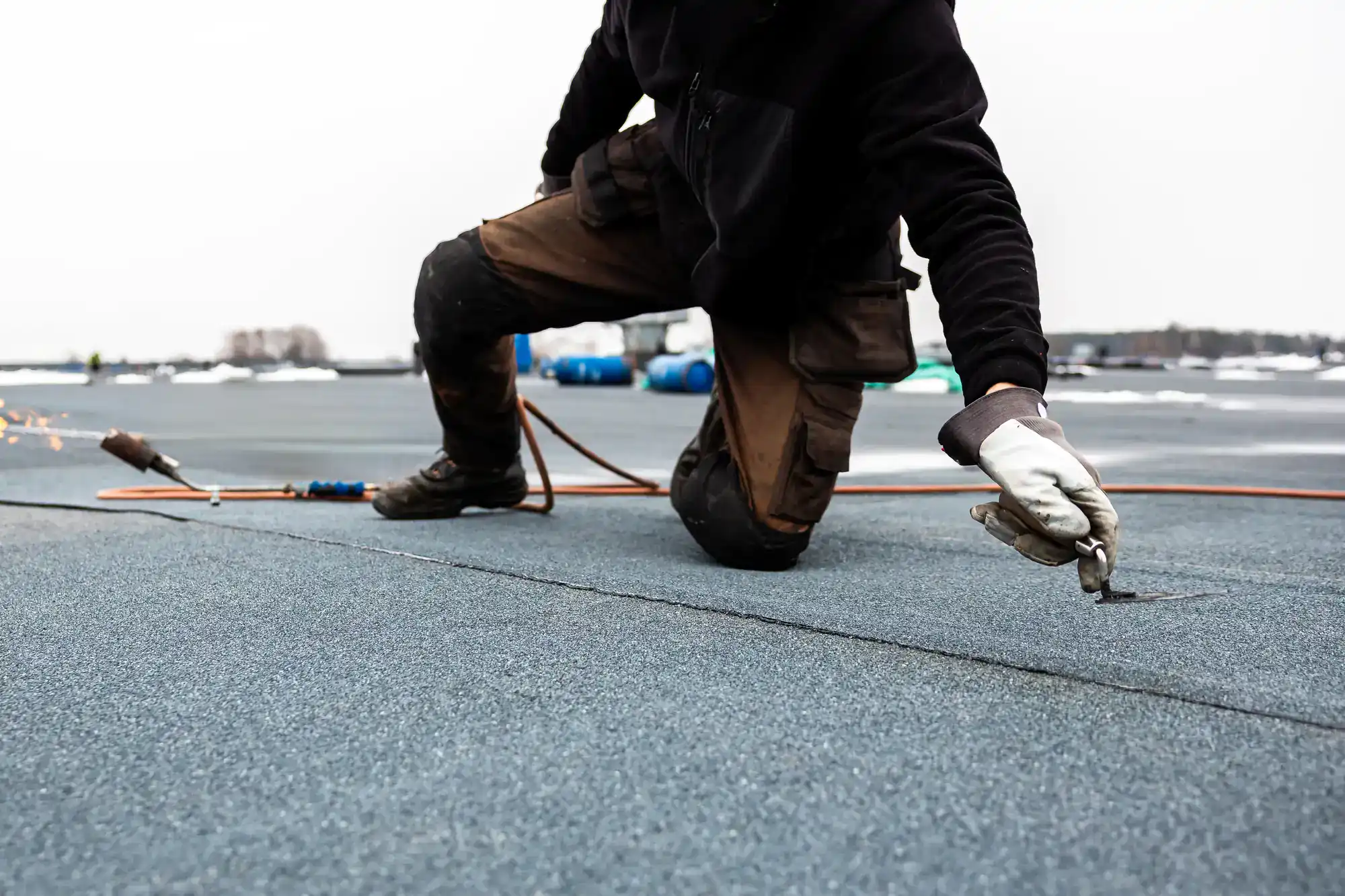
Hear from Our Customers
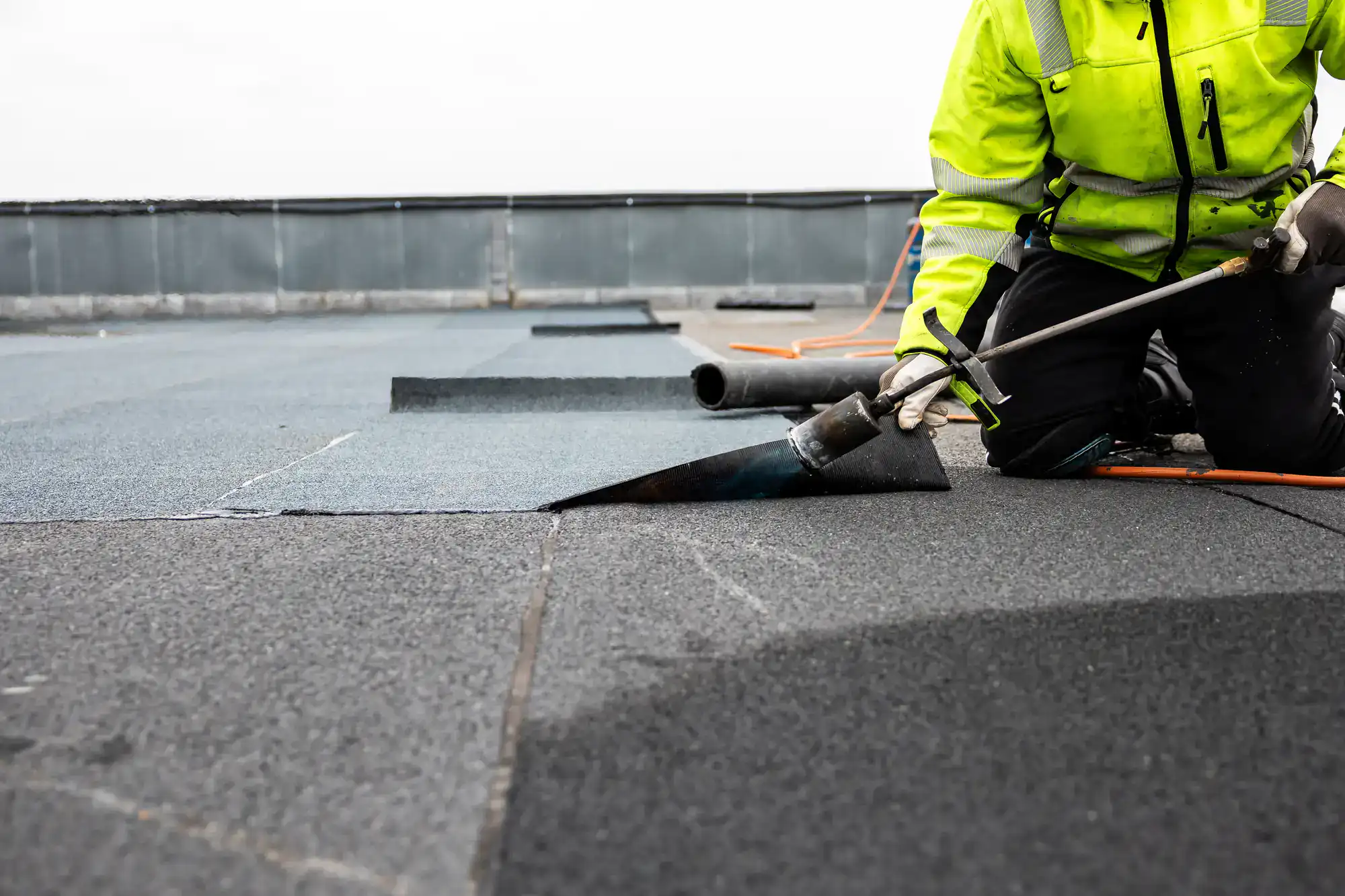
Your flat roof should protect your property, not create headaches. When installed correctly with the right materials, flat roofing systems handle Long Island’s storms, temperature swings, and heavy snow loads without breaking down.
You get a roof that drains properly, maintains its seal through freeze-thaw cycles, and gives you decades of reliable protection. No more middle-of-the-night calls about water damage or scrambling to find tarps after every storm.
The right flat roofing system means lower energy costs, fewer repairs, and the confidence that comes from knowing your investment will perform when it matters most.
We’ve been serving Smithtown and Suffolk County for over 22 years. We’re a family-owned company that understands what Long Island weather can do to a roof.
We’ve seen every type of flat roof failure – from poor drainage that destroys buildings to cheap installations that fail within years. That experience taught us which materials actually work here and which installation methods prevent problems before they start.
Our team holds full licensing and insurance, and we back every project with manufacturer warranties. When Smithtown property owners need flat roofing that performs, they call us because we’ve proven ourselves through two decades of Long Island winters and storms.
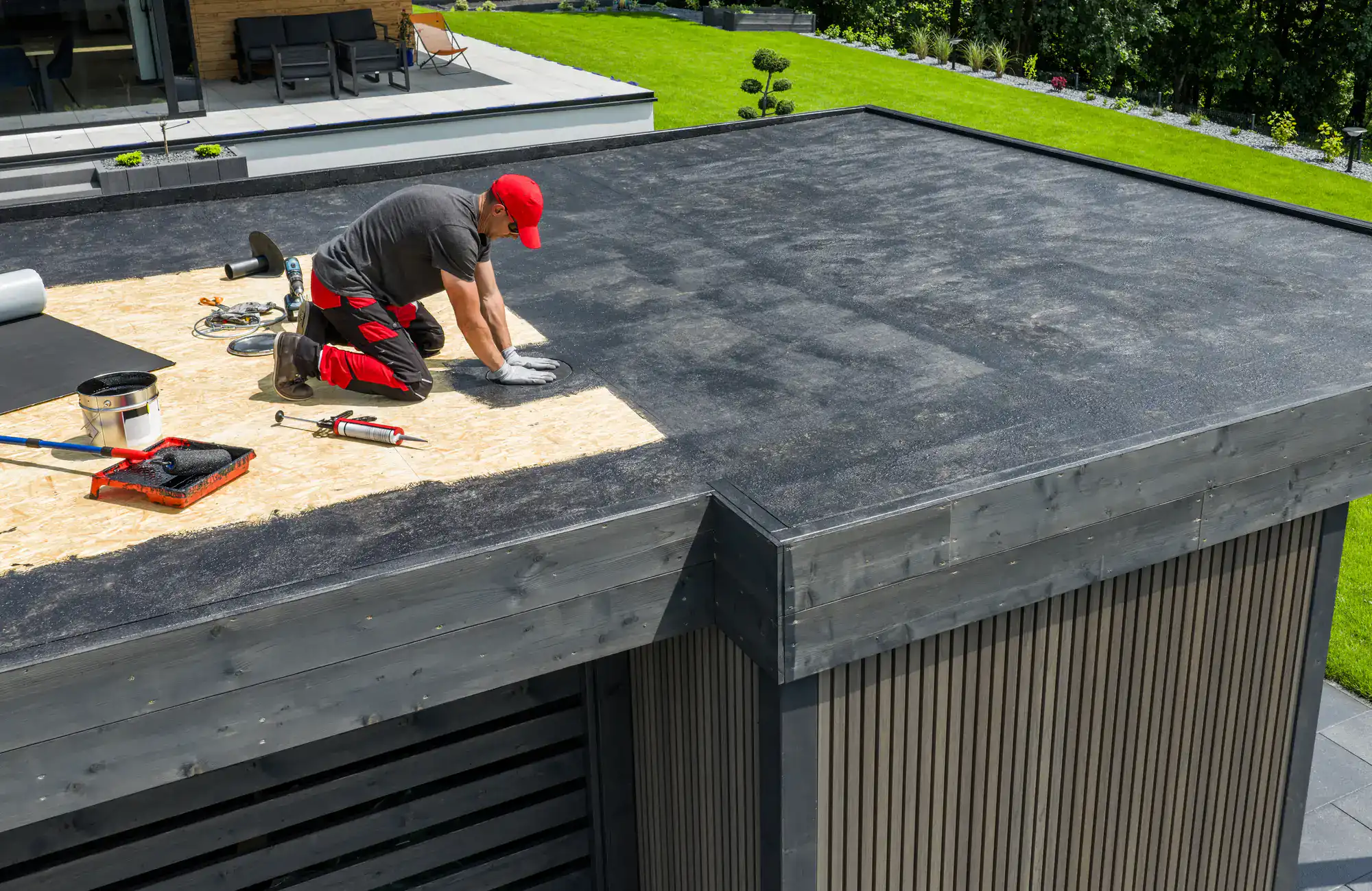
We start with a thorough inspection of your existing roof structure, drainage, and any problem areas. You’ll get a detailed assessment of what needs to be done and why – no surprises or hidden costs.
Next comes material selection. We’ll walk you through TPO, EPDM, and modified bitumen options based on your building’s specific needs, budget, and performance requirements. Each system has advantages, and we’ll explain which works best for your situation.
Installation follows proven methods with proper substrate preparation, precise membrane installation, and critical attention to seams, penetrations, and drainage details. We use molecular welding techniques where appropriate and ensure every component meets manufacturer specifications. You’ll see the difference in workmanship that comes from over 20 years of flat roofing experience.
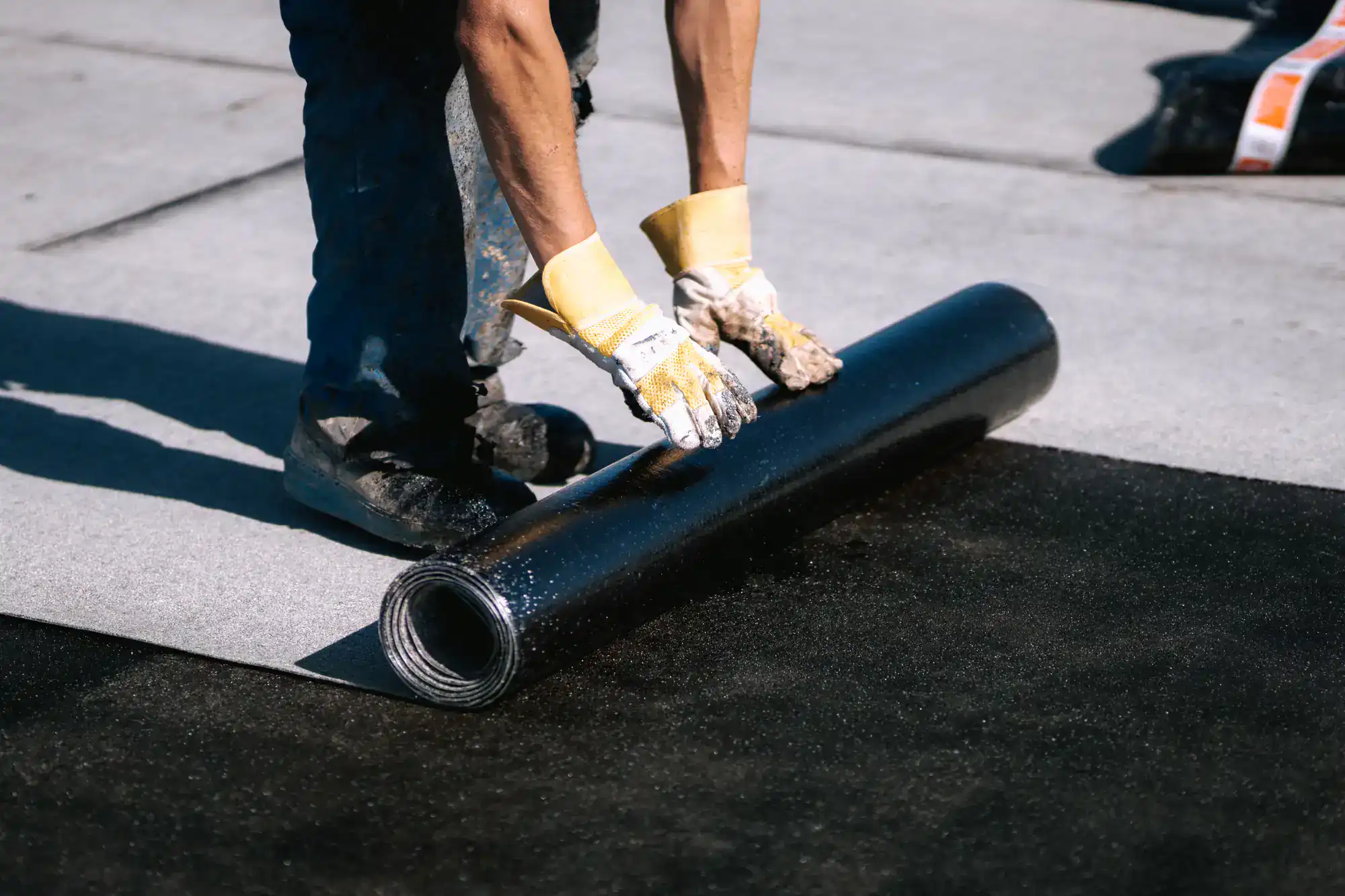
Ready to get started?
TPO roofing offers excellent energy efficiency with its white, reflective surface that reduces cooling costs during Smithtown’s hot summers. The single-ply membrane installs efficiently and provides strong resistance to UV damage, chemicals, and punctures when properly installed.
EPDM rubber roofing excels in our northern climate, with exceptional flexibility that handles temperature extremes without cracking. Available in large sheets to minimize seams, EPDM provides decades of reliable service and easy repair when needed.
Modified bitumen combines the proven performance of traditional built-up roofing with modern polymer technology. The multi-layer system offers redundancy and excellent protection against Long Island’s severe weather, making it ideal for high-traffic commercial applications.
Each system requires specific installation expertise to perform properly. We’re certified installers for major manufacturers including Carlisle and Firestone, ensuring your roof meets all warranty requirements and performance standards.
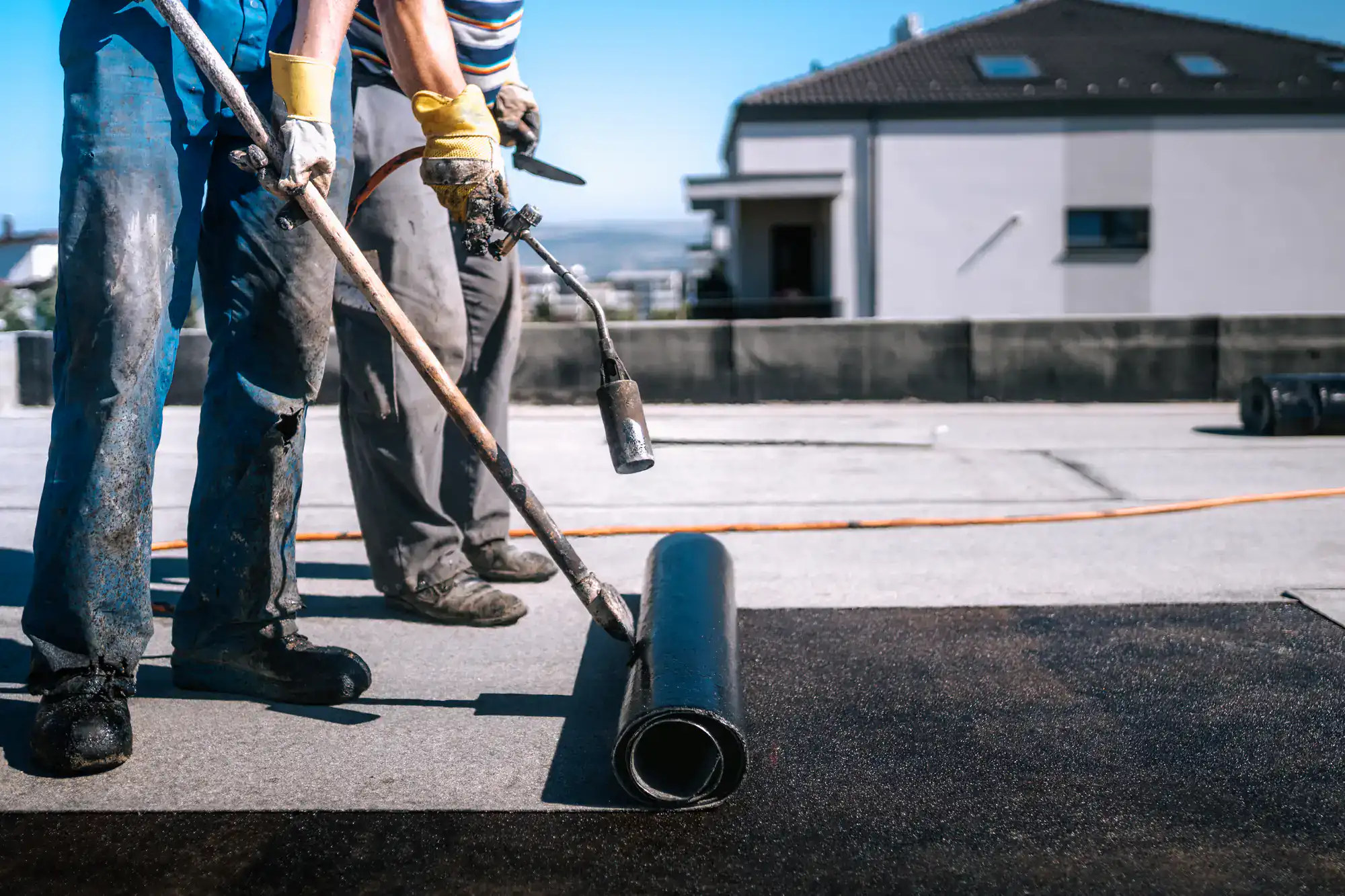
Properly installed flat roofing systems in Smithtown typically last 15-30 years depending on the material and maintenance. TPO systems often provide 15-20 years of service, while high-quality EPDM can exceed 30 years with proper care.
The key is professional installation and regular maintenance. Long Island’s freeze-thaw cycles, heavy snow loads, and severe storms can significantly shorten a roof’s life if it’s not designed and installed correctly. We see many roofs fail prematurely due to poor drainage, inadequate sealing at penetrations, or use of inferior materials.
Regular inspections and minor repairs extend your roof’s life significantly. We recommend annual inspections, especially after severe weather, to catch small problems before they become expensive failures.
Most flat roof leaks don’t actually originate from the roofing membrane itself. In our experience, about 50% of leaks come from roof penetrations like HVAC units, vent pipes, and access panels where flashing details fail over time.
Another 40% of problems occur at the roof perimeter – around copings, gutters, and wall connections where water can infiltrate between layers. Only about 10% of leaks result from actual membrane failure when the roof is properly installed.
This is why proper flashing and sealing details are critical during installation. We pay special attention to these vulnerable areas because preventing leaks at penetrations and perimeters is far more cost-effective than dealing with water damage later. Poor workmanship in these areas causes most of the emergency calls we receive.
The choice between TPO and EPDM depends on your specific building requirements, budget, and performance priorities. TPO works well for buildings where energy efficiency is important – its white surface reflects heat and can significantly reduce cooling costs during Long Island summers.
EPDM excels in our climate’s temperature extremes and offers exceptional longevity when properly maintained. It’s particularly good for buildings with complex roof shapes or limited access because it comes in larger sheets with fewer seams. The black color actually helps with heating in winter months.
For most commercial applications in Smithtown, we often recommend TPO due to its energy efficiency and strong performance record. However, EPDM might be better for buildings with heavy rooftop traffic or where aesthetics favor the black appearance. We’ll assess your specific situation and recommend the system that provides the best long-term value.
Flat roof replacement costs in Smithtown typically range from $8-15 per square foot for quality materials and professional installation. A typical 2,000 square foot commercial roof replacement usually runs $16,000-30,000 depending on the system chosen and complexity of the work.
Several factors affect pricing: existing roof removal requirements, structural repairs needed, insulation upgrades, drainage improvements, and the specific membrane system selected. TPO installation generally costs less upfront than modified bitumen systems, but both provide excellent long-term value when properly installed.
We provide detailed written estimates that break down all costs so you understand exactly what you’re paying for. Many property owners find that investing in quality materials and installation saves money over time through reduced repairs, lower energy costs, and extended roof life. We also work with insurance companies when storm damage is involved.
Flat roofs in Long Island need regular inspections and preventive maintenance to perform properly in our challenging climate. We recommend professional inspections twice yearly – once in spring to assess winter damage and once in fall to prepare for severe weather.
Key maintenance tasks include clearing debris from drains and gutters, checking and resealing penetration flashings, inspecting membrane seams for separation, and addressing any ponding water issues. Small problems caught early prevent major failures and expensive repairs.
After severe storms, immediate inspection is critical. High winds can damage flashing, hail can puncture membranes, and ice dams can cause water backup. We provide 24/7 emergency service because addressing storm damage quickly prevents secondary water damage to your building’s interior and structure.
Installing new flat roofing over existing systems is sometimes possible, but it depends on several factors including the condition of the current roof, structural capacity, and local building codes. Many commercial buildings can support one additional roof layer if the existing membrane is structurally sound.
However, we often recommend complete removal when the existing roof has multiple layers, significant damage, or drainage problems. Adding another layer without addressing underlying issues usually leads to premature failure and more expensive repairs later.
We’ll assess your current roof structure and condition to determine the best approach. Sometimes a complete tear-off and replacement costs only slightly more than a recovery system but provides much better long-term performance. Our goal is to recommend the solution that gives you the best value and longest-lasting results for your specific situation.